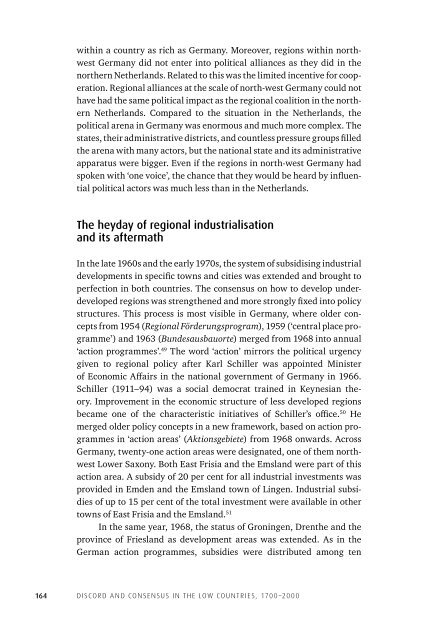Discord Consensus
7aze300jFJo
7aze300jFJo
You also want an ePaper? Increase the reach of your titles
YUMPU automatically turns print PDFs into web optimized ePapers that Google loves.
within a country as rich as Germany. Moreover, regions within north-<br />
west Germany did not enter into political alliances as they did in the<br />
northern Netherlands. Related to this was the limited incentive for cooperation.<br />
Regional alliances at the scale of north-west Germany could not<br />
have had the same political impact as the regional coalition in the northern<br />
Netherlands. Compared to the situation in the Netherlands, the<br />
political arena in Germany was enormous and much more complex. The<br />
states, their administrative districts, and countless pressure groups filled<br />
the arena with many actors, but the national state and its administrative<br />
apparatus were bigger. Even if the regions in north-west Germany had<br />
spoken with ‘one voice’, the chance that they would be heard by influential<br />
political actors was much less than in the Netherlands.<br />
The heyday of regional industrialisation<br />
and its aftermath<br />
In the late 1960s and the early 1970s, the system of subsidising industrial<br />
developments in specific towns and cities was extended and brought to<br />
perfection in both countries. The consensus on how to develop underdeveloped<br />
regions was strengthened and more strongly fixed into policy<br />
structures. This process is most visible in Germany, where older concepts<br />
from 1954 (Regional Förderungsprogram), 1959 (‘central place programme’)<br />
and 1963 (Bundesausbauorte) merged from 1968 into annual<br />
‘action programmes’. 49 The word ‘action’ mirrors the political urgency<br />
given to regional policy after Karl Schiller was appointed Minister<br />
of Economic Affairs in the national government of Germany in 1966.<br />
Schiller (1911–94) was a social democrat trained in Keynesian theory.<br />
Improvement in the economic structure of less developed regions<br />
became one of the characteristic initiatives of Schiller’s office. 50 He<br />
merged older policy concepts in a new framework, based on action programmes<br />
in ‘action areas’ (Aktionsgebiete) from 1968 onwards. Across<br />
Germany, twenty-one action areas were designated, one of them north-<br />
west Lower Saxony. Both East Frisia and the Emsland were part of this<br />
action area. A subsidy of 20 per cent for all industrial investments was<br />
provided in Emden and the Emsland town of Lingen. Industrial subsidies<br />
of up to 15 per cent of the total investment were available in other<br />
towns of East Frisia and the Emsland. 51<br />
In the same year, 1968, the status of Groningen, Drenthe and the<br />
province of Friesland as development areas was extended. As in the<br />
German action programmes, subsidies were distributed among ten<br />
164<br />
DISCORD AND CONSENSUS IN THE LOW COUNTRIES, 1700–2000


